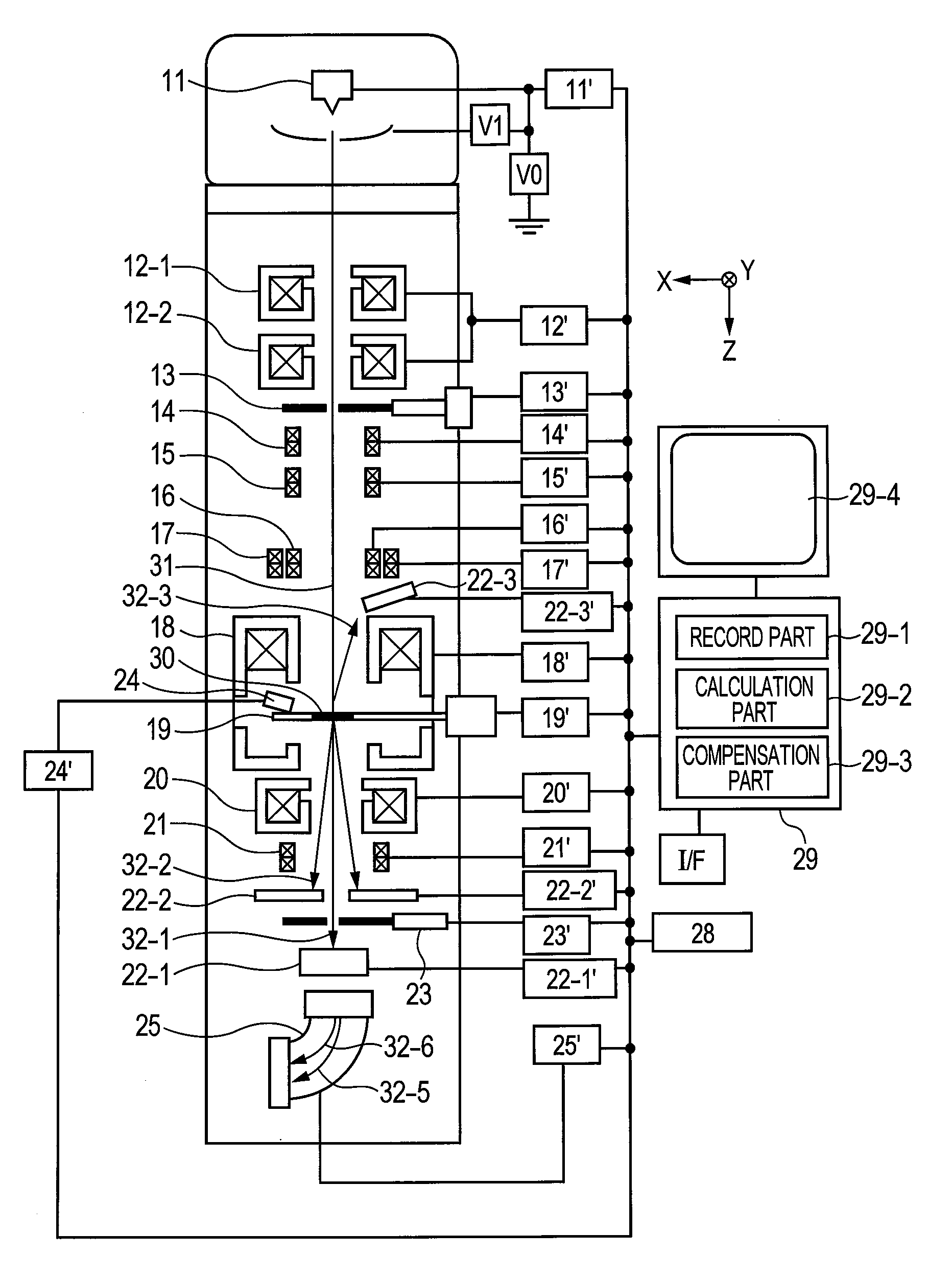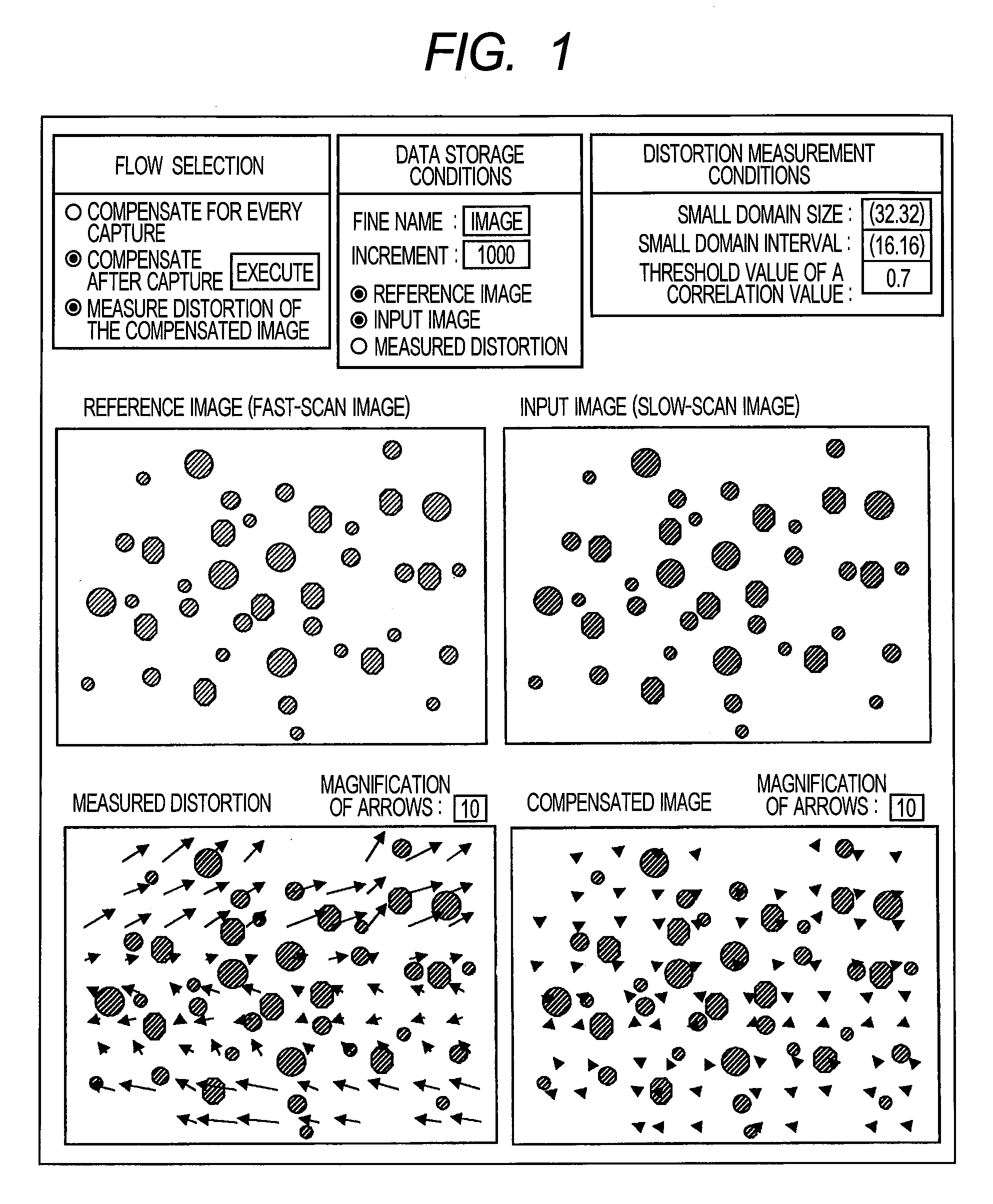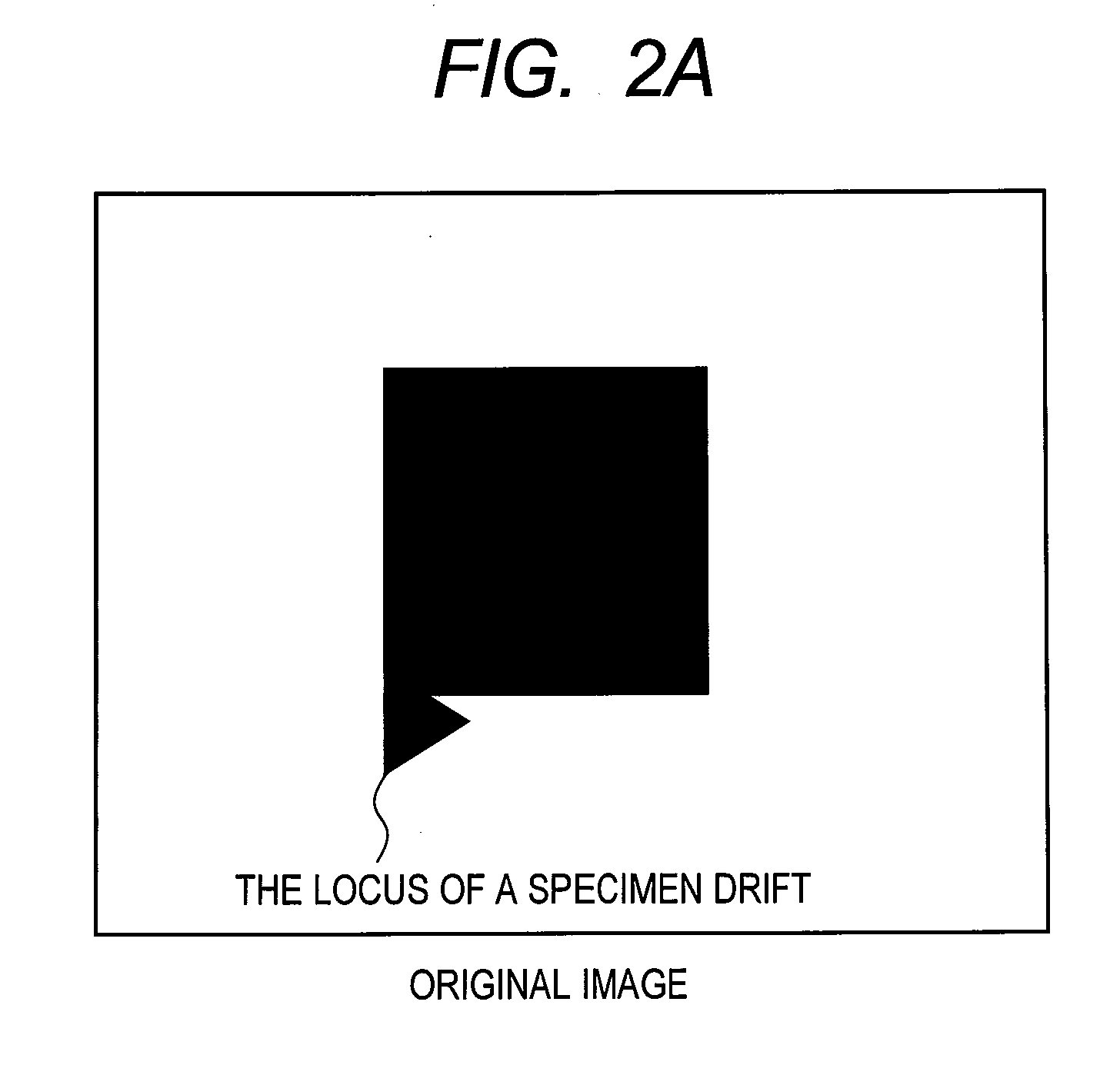Charged particle beam microscope and method of measurement employing same
a charge particle and microscope technology, applied in the field of charge particle beam microscope and charge particle beam microscopy, can solve the problems of specimen drift, blurring and distortion in formed images, and stored images with blurring in the drift direction, and achieve the effect of reducing the effect of specimen drift on images
- Summary
- Abstract
- Description
- Claims
- Application Information
AI Technical Summary
Benefits of technology
Problems solved by technology
Method used
Image
Examples
embodiment 1
[0041]Embodiment 1 shows a STEM to which a system for automatically compensating for image distortion caused by specimen drift is applied.
[0042]FIG. 7 shows a basic configuration of the STEM / SEM used in Embodiment 1. A direction substantially parallel to the optical axis of the optical column is assumed to be the Z direction and a plane substantially orthogonal to the optical axis is assumed to be the XY plane. The STEM / SEM system includes an electron gun 11, which is an electric charged particle source, for emitting a primary electron beam 31, an electron gun control unit 11′, condenser lenses 12-1, 12-2 for converging the primary electron beam 31 emitted from the electron gun, a condenser lens control unit 12′, a condenser aperture 13 for controlling the divergent angle of the primary electron beam 31, a condenser aperture control unit 13′, an alignment deflector 14 for controlling the incidence angle of the beam to a specimen 30, an alignment deflector control unit 14′, a stigmat...
embodiment 2
[0055]In Embodiment 2, as with the case of Embodiment 1, the apparatus shown in FIG. 7 measures specimen drift before forming images, forms an image while compensating for the specimen drift by an image shift deflector 16, and executes distortion compensation after forming the image through the image processing described in Embodiment 1. The matters that are described in Embodiment 1, but not in Embodiment 2, should be considered as being included in Embodiment 2.
[0056]FIG. 8 shows a flow of compensating for specimen drift in Embodiment 2. Steps (S5) for compensating for specimen drift by an image shift deflector during imaging are added to the basic flow shown in FIG. 3.
[0057]First, specimen drift is measured by using fast-scan images (S5-1), and an approximation function of the specimen drift occurred during imaging is determined (S5-2). In Embodiment 2, the number of images to be captured is set to 3 or more, and the approximation function of the specimen drift is obtained from t...
embodiment 3
[0060]Embodiment 3 shows an example in which the present invention is applied to an apparatus capable of providing multiple types of electric charged particle beams. The matters that are described in Embodiments 1 and 2, but not in Embodiment 3, should be considered as being included in Embodiment 3.
[0061]As with the case of Embodiments 1 and 2, Embodiment 3 also uses the same apparatus as shown in FIG. 7. The apparatus in FIG. 7 is equipped with a plurality of detectors: a detector 22-3 for detecting secondary electrons emitted backward from the specimen 30; an electron detector for bright-field images 22-1 for detecting low angle scattering electrons out of electron beams emitted forward from the specimen 30; and an electron detector for dark-field images 22-2 for detecting high angle scattering electrons out of electron beams emitted forward from the specimen 30. In addition, a transmitted electron beam can be split into elastically scattered electron beam 32-5 and inelastically ...
PUM
 Login to View More
Login to View More Abstract
Description
Claims
Application Information
 Login to View More
Login to View More - R&D
- Intellectual Property
- Life Sciences
- Materials
- Tech Scout
- Unparalleled Data Quality
- Higher Quality Content
- 60% Fewer Hallucinations
Browse by: Latest US Patents, China's latest patents, Technical Efficacy Thesaurus, Application Domain, Technology Topic, Popular Technical Reports.
© 2025 PatSnap. All rights reserved.Legal|Privacy policy|Modern Slavery Act Transparency Statement|Sitemap|About US| Contact US: help@patsnap.com



